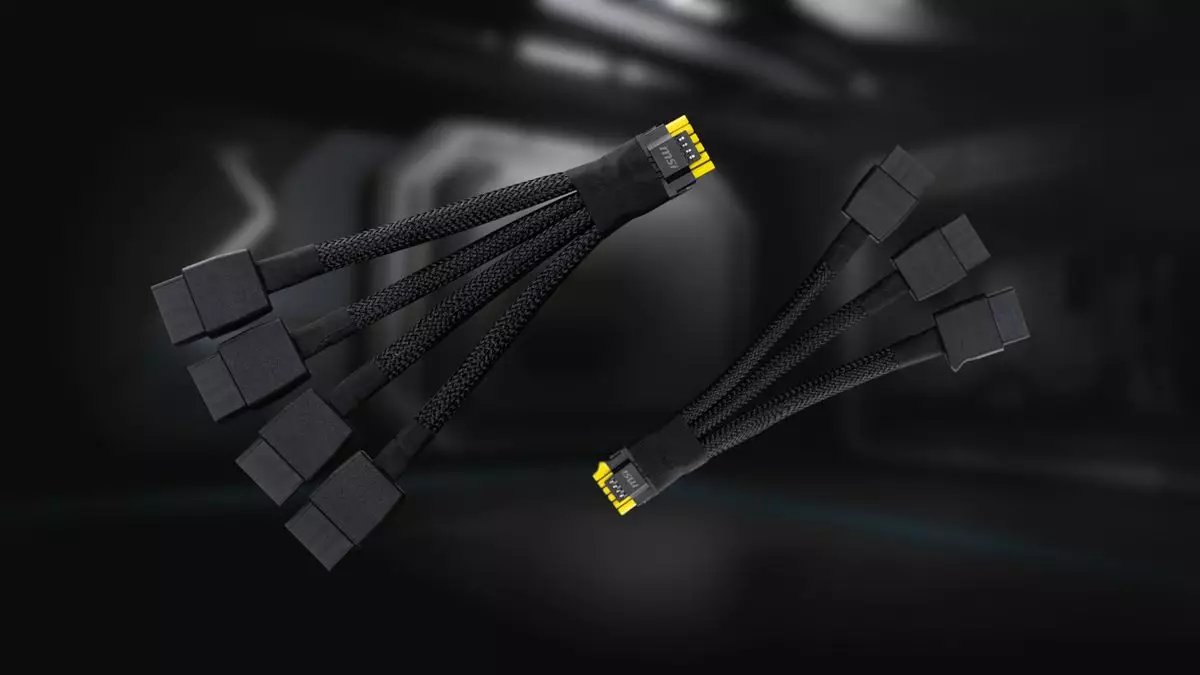The launch of high-performance graphics cards such as NVIDIA’s RTX 4090 stirred up both excitement and anxiety among users. A particularly concerning issue was the notorious tendency for power cables to melt if not fully inserted into the GPU’s socket, leading many enthusiasts to second-guess their purchasing decisions. With the impending arrival of the RTX 50-series graphics cards, NVIDIA has revised its design to address these safety concerns. In this article, we delve into the implications of these changes, focusing on MSI’s innovative approach towards enhancing user experience and safety with their Blackwell GPUs.
The melting connector debacle primarily stemmed from a trifecta of issues. Firstly, the initial design of the 12VHPWR socket, which was devoted to supplying significant power consistently to the GPU, lacked clarity for users regarding whether the cable was fully connected. This ambiguity was compounded by the inconsistent quality of third-party adapter cables, which further contributed to power delivery problems. As users began reporting melting issues, it became clear that a comprehensive solution was necessary to prevent safety hazards in the future.
As power demands for graphics cards escalated—evident with the RTX 5090’s maximum power consumption reaching up to 575 W—NVIDIA was under pressure to rectify past shortcomings while improving upon future designs. The consequence of not addressing these well-documented cable issues not only risked damaging expensive components but also held the potential to taint NVIDIA’s reputation in the competitive gaming arena.
In light of these challenges, MSI has pioneered an innovative solution for its RTX 50-series Blackwell graphics cards by introducing a specialized adapter cable that directly addresses the previous problems associated with power connections. The introduction of the brightly colored yellow plastic surrounding the 12V-2×6 connector pins serves a critical function—if users can still see the yellow plastic after trying to connect the cable, it is a clear indicator that the cable is not properly seated. This simple yet effective visual cue alleviates the guesswork involved in ensuring a secure connection, fostering greater consumer confidence.
MSI’s proactive stance not only seeks to improve usability but also enhances safety for users investing in these high-end GPUs. Given the RTX 5090’s significant power draw, which can reach nearly 50 A through a compact connection, it’s unreasonable to rely solely on consumers’ abilities to ensure proper cable insertion. MSI’s design integrates practical user feedback into the product, a commendable move in an industry where usability often takes a back seat to raw performance.
Other manufacturers have adopted a variety of complex alternatives ranging from warning lights to technical solutions that might confuse the everyday user. However, MSI’s straightforward visual indicator effectively communicates the status of the connection. This simplicity not only enhances the experience for gamers but also sets a new industry standard.
By incorporating features such as the yellow connector guidance within its adapter cables, MSI is reshaping expectations concerning power supplies and connectivity. The importance of innovative safety solutions transcends the product line—it’s crucial for the entire hardware ecosystem and for maintaining consumer trust in high-performance components.
As NVIDIA and its partners advance into the future with the RTX 50-series, the focus on safety and user-friendly design features is more critical than ever. The mistakes surrounding the RTX 4090’s power connectors serve as an essential learning point. With MSI’s successful deployment of proactive design principles aimed at preventing problems before they arise, it may well lead the charge toward safer, more reliable high-performance gaming experiences.
The innovations in power connection safety offered by MSI and the revised designs from NVIDIA not only demonstrate ongoing commitment to quality but also signal a significant step forward for graphics card technology. As enthusiasts await the release of the RTX 5090 and its counterparts, they can rest assured that the lessons learned have been meaningfully integrated into the next generation of GPUs.

